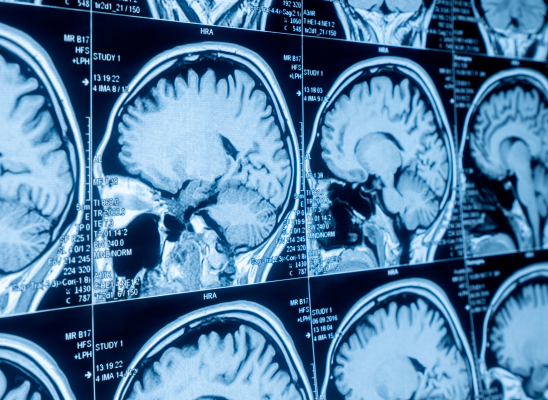
Online test
Find out the severity of your symptoms with this free online test
Obsessive-Compulsive Disorder (OCD) can be an exhausting and overwhelming condition. It’s made up of relentless, intrusive thoughts (obsessions) and repetitive actions (compulsions) that people feel they have to do just to ease the anxiety. For many folks, treatment like Cognitive Behavioral Therapy (especially something called Exposure and Response Prevention) and medications like SSRIs really help. But for a small group of people, these treatments just don’t cut it. When nothing else works, Electroconvulsive Therapy—yes, ECT—sometimes enters the conversation.
What Exactly Is ECT?
ECT stands for Electroconvulsive Therapy, and yes, it’s that thing people often picture from old movies. But the reality today is a lot different. It’s done under general anesthesia, with muscle relaxants, in a controlled medical setting. The goal is to trigger a brief, controlled seizure in the brain, which can actually help reset certain brain circuits. It’s been used mostly for severe depression, but in some really tough OCD cases, it’s shown promise.
When Might ECT Be Considered for OCD?
ECT isn’t something mental health professionals consider right away—it’s usually seen as a last resort. But here are some situations where it might come up:
- When nothing else has worked: If someone’s tried multiple medications and rounds of therapy and still hasn’t seen improvement.
- When OCD takes over daily life: Some people are so stuck in rituals or trapped by their thoughts that basic functioning becomes impossible.
- When there’s more going on: If OCD is showing up alongside depression, psychosis, or another serious mental illness, ECT might help both.
- When time is critical: In extreme situations, where someone’s mental health is in serious crisis, fast relief might be needed.
A Complicated Past
ECT has a rough reputation, and honestly, it's understandable. In the past, it was used without consent and sometimes misused entirely—including in misguided attempts to “treat” things like homosexuality (Burton, 2015). That history still haunts how people view the treatment today. But modern ECT is a whole different thing. It’s done ethically, with proper safety protocols, and often makes a real difference for people in crisis (Hafner, 2019).
Real Stories: Mixed Experiences
ECT isn’t usually what people think of when treating OCD, but there are success stories. One example is a woman who had suffered for 14 years with really intense OCD—constant intrusive thoughts and exhausting compulsions like over-washing and needing reassurance. Nothing helped—until ECT. After just a couple of sessions, her symptoms started to ease. After 14 sessions, she was spending far less time stuck in rituals and had made big progress in her daily life (Bonchek, 2009).
“After the first ECT, she started speaking. After the second, her OCD scores dropped a lot. By the end of 14 sessions, she was spending only 15 minutes bathing.”
— Psychiatry Online
But of course, it doesn’t work that way for everyone. Some people have shared pretty painful experiences, too.
“The experience of ECT has broken part of my heart and robbed a large chunk of my mental functioning and ability to form and enjoy memories, the very thing that makes us human.”
— Sage Journals
What the Research Shows
While studies are still ongoing, we’re starting to see more data on how ECT might help people with OCD.
ECT can help when other treatments don’t work. Some studies show that people with really stubborn OCD can get noticeable relief after ECT, especially when other treatments haven’t helped (Hafner, 2019; Fontenelle et al., 2015; Rosson et al., 2022).
It can improve both OCD and depression. Looking back at past cases, people who tried ECT after failing multiple therapies often saw their OCD symptoms drop—and their depression improve too (Li et al., 2022; Acevedo, 2021).
There’s a science behind why it might work. Research on how ECT affects the brain shows it can change circuits linked to OCD, which may explain why it helps in severe or hard-to-treat cases (Cojocaru, 2024; Elsouri, 2024; Lapidus, 2014).
Still, the big picture is that we need more research. ECT shouldn’t be seen as a replacement for standard treatments like CBT or medication. Instead, it’s usually considered a plan B—or even plan C or D—for people who haven’t improved with other approaches.
Weighing the Pros and Cons
Pros
- It can work fast. Unlike meds that take weeks, ECT can start helping within a few sessions.
- It may help with other issues too. If OCD comes with depression, ECT might ease both.
- It’s safer now. Thanks to modern tech and procedures, the risks are lower than they used to be.
- It might last. Some people report that their improvements hold up long-term.
Cons
- Memory issues. This is the most talked-about risk. Most people recover, but for some, it’s lasting.
- Physical side effects. Headaches, nausea, and fatigue are possible but usually don’t stick around.
- The symptoms might come back. ECT can reduce symptoms, but it doesn’t cure OCD.
- It’s emotionally tough. Stigma, fear, and uncertainty can all take a toll.
- It’s not for everyone. People with certain medical conditions might not be able to get ECT safely (American Psychiatric Association, 2016).
What to Know If You’re Considering It
ECT isn’t a quick fix, and it’s definitely not the first thing doctors reach for. But in some cases, it’s the right next step. If you’re thinking about it, here’s what usually happens:
- You’ll go through a full medical and psych eval to make sure it’s a good fit.
- You’ll be given detailed info about what to expect and asked to give full consent.
- The plan will be tailored to you—how often, what kind of electrode placement, etc.
- After sessions, you’ll be monitored and supported. Most people need follow-up therapy and meds to keep things on track.
Final Thoughts
For people with severe, treatment-resistant OCD, ECT might open a door when every other one seems shut. It’s not a miracle cure, and it’s not without risks—but it can help, and it’s an option worth discussing with a trusted provider.
If you or someone you know is living with OCD, know this: help is out there. And you don’t have to go it alone. At StopOCD, we’re here to support you in figuring out what treatment makes the most sense for your unique experience. Your OCD doesn’t define you—and reaching out is the first real step toward healing.
References
- Burton, N. (2015, September 18). When homosexuality stopped being a mental disorder. Psychology Today. https://www.psychologytoday.com/us/blog/hide-and-seek/201509/when-homosexuality-stopped-being-a-mental-disorder
- Rosson, S., de Filippis, R., Croatto, G., Collantoni, E., Pallottino, S., Guinart, D., Brunoni, A. R., Dell'Osso, B., Pigato, G., Hyde, J., Brandt, V., Cortese, S., Fiedorowicz, J. G., Petrides, G., Correll, C. U., & Solmi, M. (2022). Brain stimulation and other biological non-pharmacological interventions in mental disorders: An umbrella review. Neuroscience and Biobehavioral Reviews, 139, 104743. https://doi.org/10.1016/j.neubiorev.2022.104743
- Fontenelle, L. F., Coutinho, E. S., Lins-Martins, N. M., Fitzgerald, P. B., Fujiwara, H., & Yücel, M. (2015). Electroconvulsive therapy for obsessive-compulsive disorder: a systematic review. The Journal of Clinical Psychiatry, 76(7), 949–957. https://doi.org/10.4088/JCP.14r09129
- Li, K., Long, J., Deng, W., Cheng, B., & Wang, J. (2022). Electroconvulsive therapy for obsessive-compulsive disorder: A retrospective study. Frontiers in Psychiatry, 13, 1040443. https://doi.org/10.3389/fpsyt.2022.1040443
- Elsouri, K. N. (2024). Management and treatment of obsessive-compulsive disorder. Journal of Clinical Psychiatry, 85(1), 1–15. https://pmc.ncbi.nlm.nih.gov/articles/PMC11180522/
- Lapidus, K. A. B. (2014). Neuromodulation for obsessive-compulsive disorder. Psychiatric Clinics of North America, 37(3), 467–479. https://pmc.ncbi.nlm.nih.gov/articles/PMC4121444/
- Acevedo, N. (2021). Therapeutic neurostimulation in obsessive-compulsive and related disorders. Frontiers in Psychiatry, 12, 1–12. https://pmc.ncbi.nlm.nih.gov/articles/PMC8307974/
- Cojocaru, A. M. (2024). Neurobiological mechanisms and therapeutic impact of electroconvulsive therapy. Frontiers in Neuroscience, 18, 1–14. https://pmc.ncbi.nlm.nih.gov/articles/PMC11146450/
- Hafner, K. (2019, February 25). Electroconvulsive therapy is safer than ever — but stigma and side effects remain. The New York Times. https://www.nytimes.com/2019/02/25/health/electroconvulsive-therapy-ect.html
- American Psychiatric Association. (2016). Electroconvulsive therapy (ECT) reclassification comments. Retrieved from https://www.psychiatry.org/File%20Library/Psychiatrists/Advocacy/Federal/APA-FDA-ECT-reclassification-comments-03102016.pdf
- Bonchek, A. (2009). Treatment-refractory obsessive-compulsive disorder responding to maintenance electroconvulsive therapy. Psychiatry Online. https://doi.org/10.1176/appi.neuropsych.11060124
Online test
Find out the severity of your symptoms with this free online test
Start your journey with StopOCD
Take control of your life and find freedom from OCD through professional therapy and evidence-based cognitive behavioral techniques.
Start Now



